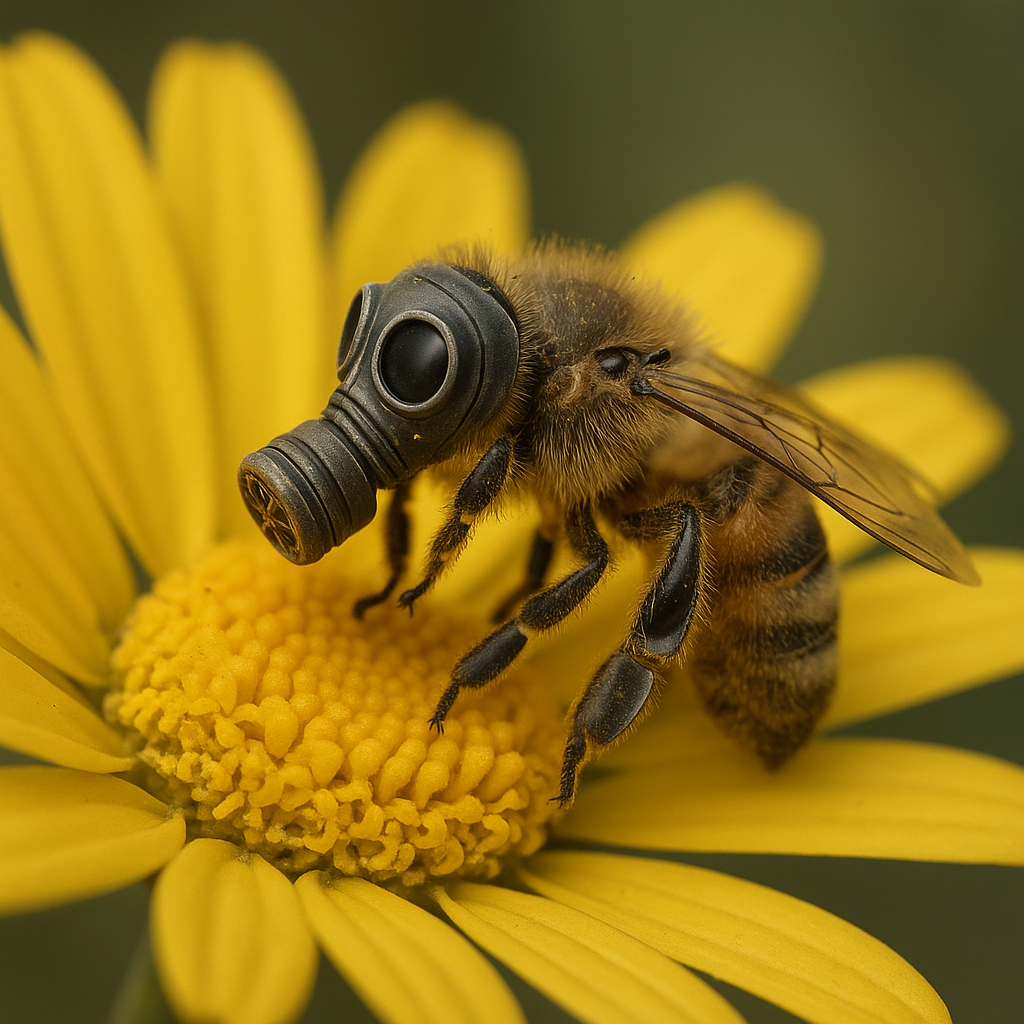Introduction
Bees—the lifeblood of ecosystems—are facing a catastrophic collapse in China, a nation already grappling with an environmental crisis of unprecedented scale. As extreme pollution chokes the skies and human activity obliterates native flora, the very survival of pollinators is at stake. This is not just an ecological tragedy; it’s an apocalyptic threat to China’s food security, economy, and future.
This article exposes how industrial growth, pesticide dependence, and habitat destruction have created a perfect storm for bee extinction in China, and what the nation must do before it’s too late.
Bees: The Cornerstone of China’s Flora and Food Supply
Bees are not optional—they are essential for the pollination of over 75% of China’s agricultural crops, including apples, pears, watermelons, and rapeseed. These crops form the backbone of rural economies and feed millions.
China’s rich tapestry of native vegetation, from the mountain wildflowers of Yunnan to the flowering orchards of Hebei, depends on bees. Without their tireless pollination work, these ecosystems—and the food supply they support—would collapse.
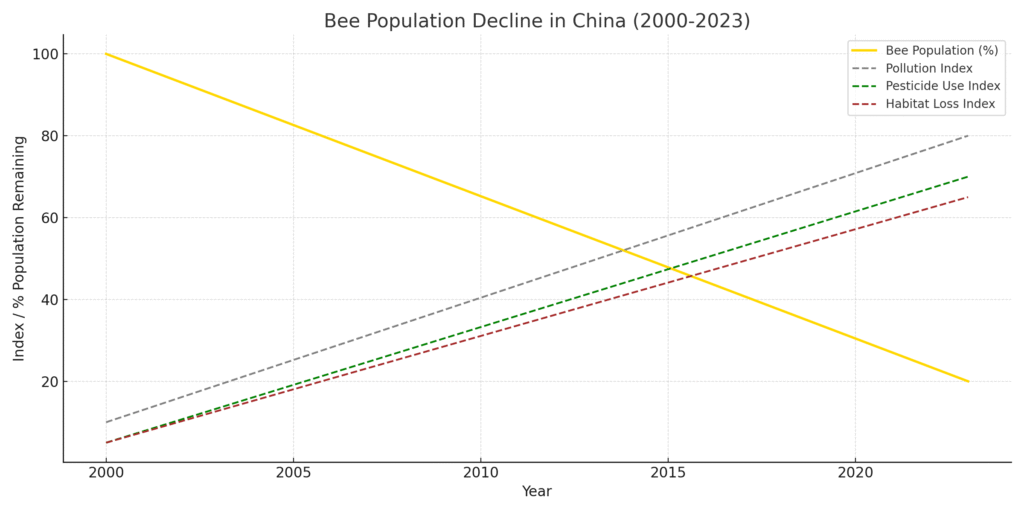
The Apocalyptic Forces Driving Bee Extinction in China
Toxic Skies: The Invisible Killer
China’s suffocating smog, laden with PM2.5 particles, sulfur dioxide, and nitrogen oxides, is poisoning both bees and the flowers they rely on. Pollution distorts the scent trails bees use to find nectar, while ozone and particulate matter damage floral tissues, reducing nectar and pollen output.
In smog-dense regions like Hebei and the Yangtze Delta, bees are disoriented, unable to feed, and dying in unprecedented numbers.
Pesticide Armageddon
China is the world’s largest pesticide user, and the widespread use of neonicotinoids is decimating bee populations. These chemicals wreak havoc on bee nervous systems, impairing memory, navigation, and foraging ability.
In provinces like Sichuan and Henan, entire apiaries have collapsed, with farmers reporting catastrophic bee die-offs during peak flowering seasons. The unchecked use of pesticides is turning China’s once-flourishing landscapes into toxic dead zones.
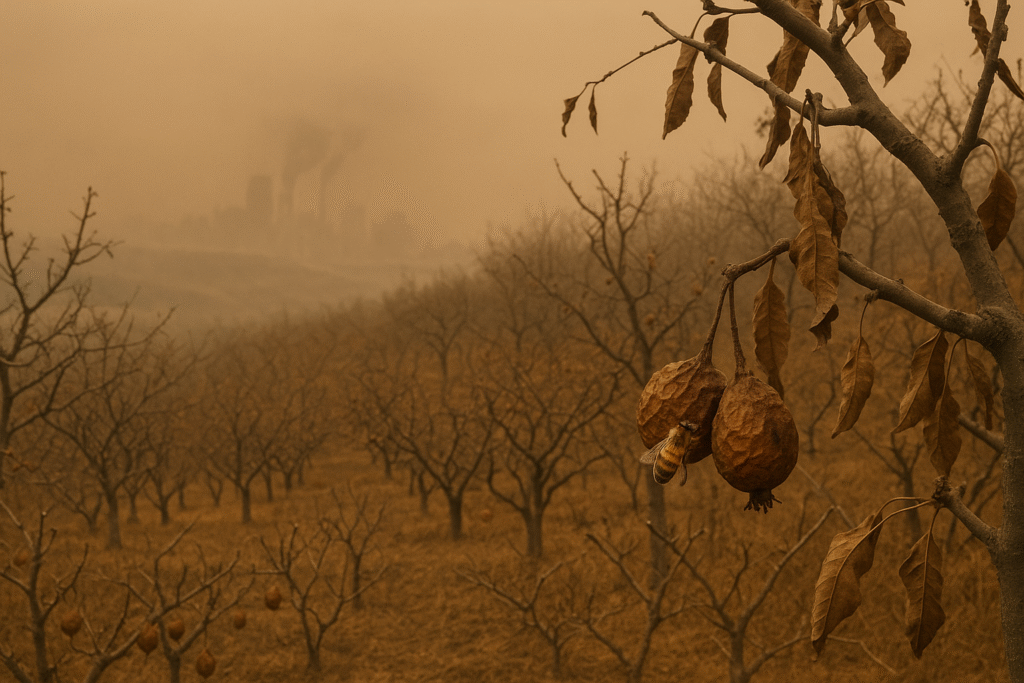
Destruction of Flora: A Vanishing Green World
Decades of urban sprawl, industrial expansion, and monoculture farming have obliterated China’s native flora, leaving bees stranded in barren landscapes. Natural meadows, forests, and wetlands have been replaced by concrete jungles and chemically dependent crop fields.
China’s once-vibrant floral ecosystems—essential sources of food for bees—are disappearing, leaving behind a lifeless, sterile environment. This is an ecological catastrophe unfolding in real time.
An Apocalyptic Threat to China’s Food Security
The loss of bees in China is not just an environmental issue; it is an existential crisis for the nation’s food supply.
The Grim Reality of Hand Pollination
In some provinces, the bee collapse has forced farmers to resort to manual pollination—a laborious, inefficient, and unsustainable practice. Armed with brushes and pollen, farmers in parts of Sichuan climb trees to mimic what bees once did effortlessly.
This stopgap measure is a sign of ecological breakdown—a warning that China’s food system is on the verge of collapse.
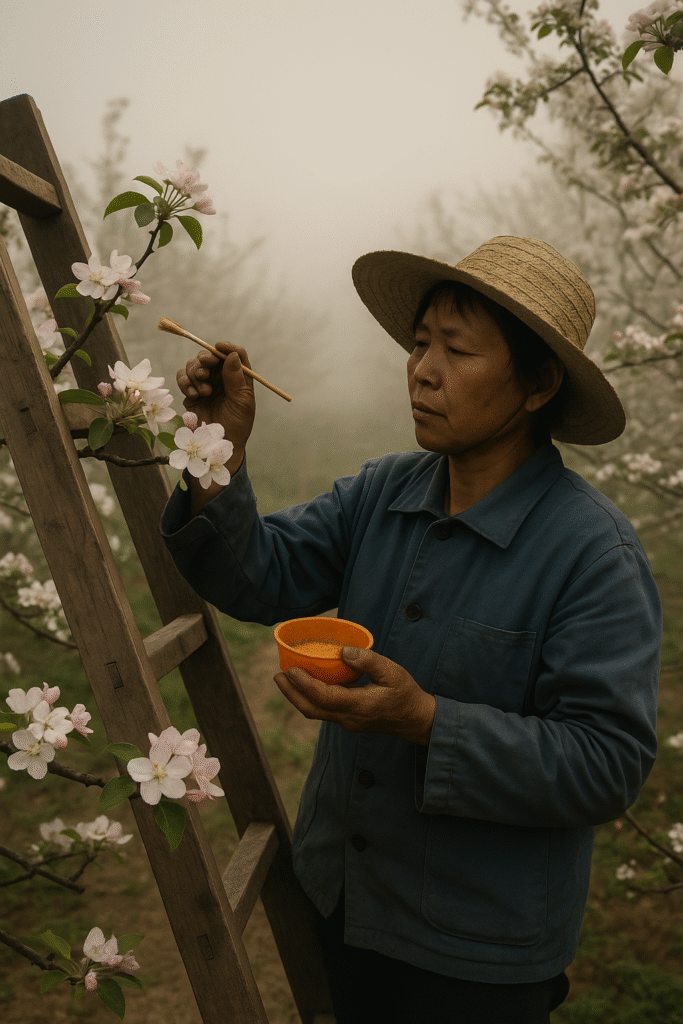
Economic Fallout
Pollination services provided by bees are worth billions globally. In China, the loss of these services threatens major agricultural exports, from apples to canola oil. The economic impact could spiral into food shortages, higher prices, and social unrest.
The Death of Biodiversity
The collapse of bee populations is triggering a chain reaction: wild vegetation fails to reproduce, medicinal plants decline, and entire ecosystems teeter on the edge. This biodiversity loss is an apocalyptic unraveling of natural systems that have supported China for millennia.
Case Studies: The Apocalypse in Action
Shaanxi: The Silent Apple Crisis
In Shaanxi’s apple orchards, once a symbol of agricultural abundance, farmers report up to 40% declines in yield. Bee populations have plummeted due to pesticide overuse and toxic air, leaving trees barren and economies in peril.
The Loess Plateau: A Fading Floral Haven
Once a sanctuary for native bees and wildflowers, the Loess Plateau is now scarred by overgrazing, erosion, and ecological neglect. Bees struggle to find sustenance as native flora vanishes, a harbinger of collapse.
Urban Oases: A Flicker of Hope
Urban beekeeping projects in Beijing and Shanghai offer a glimmer of resilience—but they are a drop in the ocean. Without systemic change, these efforts cannot offset the apocalyptic scale of bee decline across China.
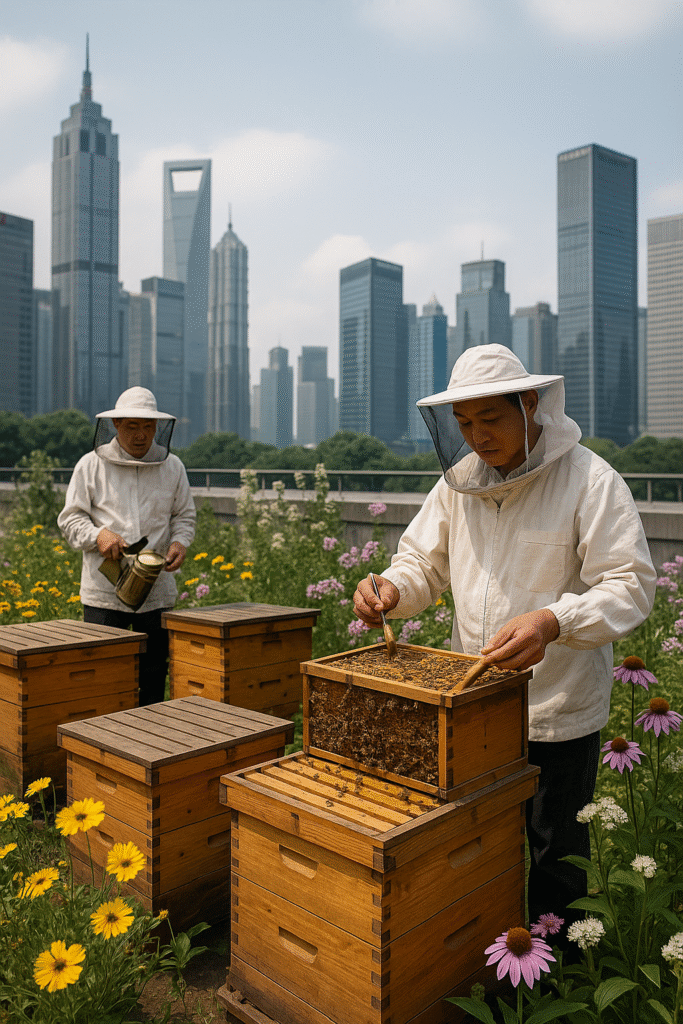
A Last Chance: Saving Bees, Saving China
Ban the Killers: Pesticide Reform Now
China must immediately phase out neonicotinoids and other bee-killing chemicals. Pesticide regulation, coupled with farmer education on safer practices, is critical to stop the poisoning of pollinators.
Restore Native Flora
Rewilding degraded landscapes with native flowering plants is essential. National programs must prioritize pollinator-friendly vegetation corridors across agricultural zones and urban spaces alike.
Tackle Pollution: Clean Air, Thriving Bees
Curbing emissions from coal plants, factories, and vehicles is urgent—not just for human health, but for the survival of bees and the green world they sustain.
A National Pollinator Strategy
China needs a Pollinator Protection Plan—a coordinated policy framework backed by research funding, habitat restoration goals, and public awareness campaigns.
China’s Ecological Apocalypse is Here—But It’s Not Too Late
The apocalyptic collapse of bee populations in China is a warning siren for the nation—and the world. It signals a deeper, systemic unraveling of ecosystems caused by pollution, habitat destruction, and chemical dependency.
Without bees, China’s agricultural backbone will crumble, food security will erode, and the green landscapes that have shaped the nation’s culture and economy will fade into memory.
Yet hope remains. If China acts decisively—banning bee-killing pesticides, restoring native flora, and controlling pollution—this apocalyptic trajectory can be reversed. The time to act is now. For the sake of bees, for the sake of China, for the sake of the planet.
Sources
FAO (Food and Agriculture Organization of the United Nations)
- Pollinators Vital to Our Food Supply
https://www.fao.org/pollination/en/
WWF China
- China’s Pollinator Crisis: The Urgent Need for Conservation
https://wwfchina.org/what_we_do/species/pollinators
Science Advances (2022)
- Air pollution impairs floral scent and pollinator behavior in China
https://www.science.org/doi/10.1126/sciadv.abn3222
Nature Ecology & Evolution (2021)
- Pesticides and Pollinators: The Hidden Crisis in Chinese Agriculture
https://www.nature.com/articles/s41559-021-01467-y
China Ministry of Ecology and Environment (2020)
- China’s Biodiversity Conservation Strategy and Action Plan
https://www.mee.gov.cn/ywgz/zc/ghjh/
Global Environmental Change (2018)
- The Impact of Air Pollution on Insect Pollinators: A Case Study from China
https://www.sciencedirect.com/science/article/abs/pii/S0959378018303676
ScienceDirect – Journal of Asia-Pacific Entomology (2022)
- Decline of Bee Populations in China: Trends, Causes, and Conservation Measures
https://www.sciencedirect.com/science/article/pii/S1226861522000140
Xinhua News Agency (2021)
- Sichuan Farmers Turn to Hand Pollination Amid Bee Shortages
https://www.xinhuanet.com/english/2021-04/24/c_139903314.htm
Greenpeace East Asia
- The Pesticide Problem: China’s Neonicotinoid Dilemma
https://www.greenpeace.org/eastasia/publication/44153/
The Guardian (2020)
- China’s Pollinator Crisis: The Vanishing Buzz
https://www.theguardian.com/environment/2020/may/29/chinas-pollinator-crisis
